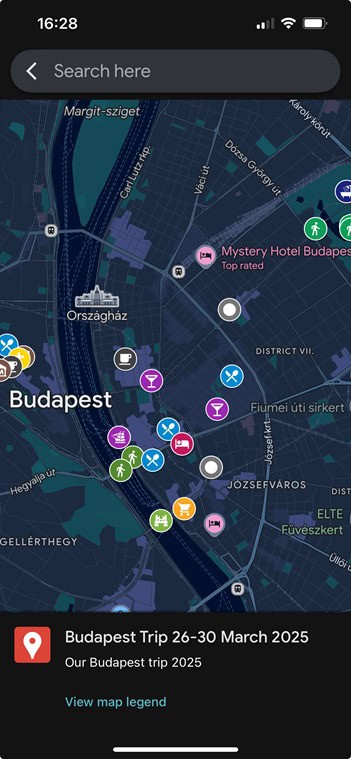When Should You Visit London?
From royal parades to riverside picnics, London’s magic reveals itself differently through the seasons. But when exactly is the “best” time to go?
That depends on what you’re after.
Are you dreaming of Christmas markets and twinkling lights with your little ones? Or longing for sun-drenched strolls along the Thames paired with world-class cultural festivals? Whether you’re planning your first visit or a return trip, this guide will help you pick the perfect time to explore the British capital — based on what matters most to you: weather, crowds, budget, family activities, and cultural experiences.
Let’s explore London through the seasons to help you plan a trip that feels meaningful, magical, and just right for you.
TL;DR (Too Long; Didn’t Read)
Wondering when to visit London? This seasonal guide helps you decide based on weather, crowds, events, and travel budgets. From cherry blossoms in spring to Christmas markets in winter, each season offers unique cultural and family-friendly highlights. Whether you’re traveling with kids or seeking quiet museum strolls, there’s a perfect time for everyone to explore London.
Get Your FREE London Travel Map + 5 Must-Have Travel Resources!
Plan smarter, stress less, and make every trip unforgettable with these exclusive tools—100% FREE!
📩 Sign up now & download instantly!

Spring in London (March–May)
What to Expect
Spring in London feels like a gentle exhale after the long grey winter. Days grow longer, daffodils and cherry blossoms burst across the parks, and Londoners begin to reclaim the outdoors — even if they still keep an umbrella handy.
Expect daytime highs between 9°C and 15°C (48°F–59°F) with occasional rain showers. While the weather can be unpredictable, it’s a beautiful and less crowded time to visit before the summer tourism wave begins.
Best Things to Do
- See the blossoms bloom at Kew Gardens, St James’s Park, or the secluded corners of Regent’s Park. March to mid-April is typically the sweet spot for cherry blossoms.
- Wander through colorful Notting Hill, where pastel townhouses and spring flowers create photo-worthy scenes around every corner.
- Catch a Shakespeare performance at The Globe Theatre, which reopens for its open-air season in late April.
- Visit the Columbia Road Flower Market on Sundays for a burst of seasonal beauty and a slice of East London’s character.
- Join a St George’s Day event in Trafalgar Square (April 23) or local borough festivals that combine food, music, and storytelling with British tradition.
Family & Culture Travel Tips
- Pack light layers and waterproof gear — spring sun can quickly give way to a shower.
- If you’re traveling with kids, spring is a great time to take advantage of less crowded museums, outdoor playgrounds, and river cruises on the Thames.
- For families visiting from abroad, use the Wise app to manage currency conversion and save money on GBP purchases or public transport top-ups. Its real exchange rates often beat credit card conversion fees.
Summer in London (June–August)
What to Expect
Welcome to the city’s liveliest (and sunniest) chapter. London in summer buzzes with energy — from royal pageantry to street parades and every picnic in between.
Temperatures range from 18°C to 25°C (64°F–77°F), with occasional heat waves pushing things higher. While rain is still possible, sunny skies dominate much of the season. Expect high tourist crowds and peak prices — especially in July and August.
Best Things to Do
- Attend major festivals like:
- Wimbledon (late June–early July)
- Notting Hill Carnival (August bank holiday)
- BBC Proms classical music series (July–September)
- Relax on a Thames River cruise or rent a pedal boat in Hyde Park’s Serpentine Lake.
- Explore Buckingham Palace, open to the public during the official summer opening (usually July–September).
- Catch outdoor theatre at Regent’s Park Open Air Theatre or rooftop cinema screenings.
- Stroll through the Southbank for live music, pop-up markets, and riverside food trucks.
Family & Culture Travel Tips
- Book early: Hotels and attractions sell out fast during summer. Look for flexible rates through trusted platforms that allow free cancellation.
- Pack sunscreen, hats, and refillable water bottles, especially for kids. London’s parks are perfect for spontaneous picnics or playtime.
- Many attractions remain free for families year-round, including:
- The Natural History Museum
- Science Museum
- V&A Museum of Childhood
- Consider saving time by using contactless cards or Oyster cards for all transport — even on the iconic double-decker buses.
Autumn in London (September–November)
What to Expect
As the city quiets down from summer, London takes on a crisp, romantic vibe. Autumn colors sweep through the parks, crowds thin out, and cultural life kicks into high gear with new exhibitions, West End shows, and cozy cafés calling.
Temperatures range from 11°C to 17°C (52°F–63°F), gradually cooling toward November. It’s one of the best seasons for budget-conscious travelers and anyone seeking a slower, more contemplative version of the city.
Best Things to Do
- Walk through golden-leaved parks like Richmond Park, Greenwich Park, or Hampstead Heath.
- Visit art exhibitions at the Tate Modern, National Gallery, or Design Museum — many of which are free or donation-based.
- Join in seasonal events like:
- Open House London (September): exclusive access to hidden buildings and architectural gems
- Bonfire Night (Guy Fawkes Day) on November 5th: fireworks and community bonfires across the city
- Enjoy literary festivals, pop-up galleries, and indoor markets like Borough Market or Spitalfields for a cozy cultural dive.
Family & Culture Travel Tips
- Layer up: scarves, boots, and a waterproof jacket are your autumn essentials.
- Kids will love Halloween events at London Dungeon, Hampton Court Palace, and many borough-run pumpkin festivals.
- Cultural explorers can take advantage of shorter queues at major attractions, quieter museums, and lower hotel rates — making this season an ideal blend of access and affordability.
Need More Help Planning Your Trip?
Winter in London (December–February)
What to Expect
London in winter is enchanting, especially in December. Twinkling Christmas lights, festive markets, and cozy cafés create a warm atmosphere even as temperatures dip to 2°C–8°C (36°F–46°F). While January and February are colder and quieter, they offer serious perks for travelers seeking lower prices and fewer crowds.
It’s a great time to bundle up and explore the city’s indoor treasures or embrace the holiday magic with your family.
Best Things to Do
- Wander through London’s Christmas Markets:
- Hyde Park Winter Wonderland: carnival rides, festive foods, ice sculpting, and more
- Southbank Centre Winter Festival: riverside chalets, street performers, and alpine bars
- Skate at iconic rinks like Somerset House, the Natural History Museum (temporary installations), or Alexandra Palace.
- Catch the West End’s holiday shows or pantomimes, great for children and nostalgic grown-ups alike.
- Visit the Christmas at Kew light trail or take a walk under the illuminated arches of Covent Garden.
- January and February offer a quiet and budget-friendly window for exploring museums, historical landmarks, or booking a last-minute theatre ticket.
Family & Culture Travel Tips
- Pack thermals, gloves, a warm hat, and waterproof shoes — you’ll be outdoors more than you think.
- Book indoor family-friendly attractions in advance, especially during school holidays: SEA LIFE London, London Transport Museum, and the Science Museum’s Wonderlab.
- For cultural travelers, this season is perfect for curated exhibitions, literary tours, or even exploring Londinium’s Roman ruins — all without the summer bustle.
🎟️ Planning to visit London’s top seasonal attractions?
From Thames River cruises and West End theatre shows to festive light trails and cherry blossom walks, many of the experiences mentioned in this guide can be booked in advance through trusted platforms like GetYourGuide or Viator.
For museum entries such as the Natural History Museum or the Design Museum, check out Tiqets for fast-track and mobile entry options.
Availability can vary by season — if you’re not seeing the date you need, it’s worth checking the attraction’s official website for updated hours or direct ticket sales.
School Holidays and Local Festivals: What to Know Before You Go
Understanding London’s school holiday calendar helps avoid (or embrace!) peak family travel times.
UK School Holiday Calendar
- Spring Half-Term: Mid–late February
- Easter Break: Late March to mid-April
- Summer Holiday: Late July to early September
- Autumn Half-Term: Mid–late October
- Christmas Break: Mid-December to early January
These periods often mean increased crowds, higher prices, and sold-out attractions — but also special events and kid-focused programming.
Major Annual Events Worth Timing Around
- London Marathon (April): Inspiring atmosphere, though road closures occur
- Trooping the Colour (June): The Queen’s official birthday celebration — a British spectacle of pomp and ceremony
- Wimbledon (late June–early July): A tennis-lover’s dream, plus strawberries and cream for all
- Notting Hill Carnival (August): Europe’s biggest street party
- Christmas at Kew (Nov–Dec): A dazzling light trail through the Royal Botanic Gardens
Discover Our Ultimate Collection of Travel Maps
Comparing Seasons: Weather, Crowds, and Cost at a Glance
| Season | Weather | Crowds | Price Range | Best For |
|---|---|---|---|---|
| Spring | Mild, blooming | Medium | Moderate | Nature lovers, photographers |
| Summer | Warm, sunny | High | High | Festivals, families, first-timers |
| Autumn | Cool, crisp | Low–Medium | Budget-friendly | Walks, museums, romantic getaways |
| Winter | Cold, festive | High (Dec), Low (Jan–Feb) | Budget (Jan–Feb), High (Dec) | Christmas lovers, museum-goers |
Smart Packing by Season: London Essentials
Whether you’re exploring palaces or feeding squirrels in St James’s Park, London’s weather can turn quickly. Here’s what to pack per season:
- Spring: Waterproof jacket, closed-toe shoes, umbrella, allergy tablets
- Summer: Sunscreen, hat, water bottle, day bag for spontaneous picnics
- Autumn: Layers, scarf, boots, power bank for all-day sightseeing
- Winter: Warm coat, gloves, thermal layers, hand warmers, chapstick
Pro tip for families: bring a collapsible stroller for younger kids, especially useful for long museum visits or when little legs need a break.
Looking to stay organized? Download our Family Travel Packing Checklist to cover all your essentials with ease.
Budget Tips for Each Season
Whether you’re planning a summer splurge or a frugal February getaway, London has budget-friendly options:
- Off-Peak Travel (Autumn & Jan/Feb): Save on flights and accommodations. Weekday travel often costs less.
- Get a Visitor Oyster Card: Access discounted travel on the Tube, buses, and more.
- Use TravelSpend: Track your spending live and manage your travel budget smartly.
- Buy tickets in advance: For theatre, exhibitions, and even free attractions with timed entry.
- Bundle attractions with passes: Consider the London Pass or Explorer Pass if you’re visiting multiple paid attractions.
- Wise App: For international visitors, this is a must-have to convert currency with low fees and better rates than airport exchanges.

Test Your Travel Smarts with Our Quizzes!
Think you know your way around the world? From cultural traditions to hidden gems, our short and playful travel quizzes are the perfect way to challenge yourself, learn something new, and maybe even spark your next adventure. Great for anyone who loves a bit of travel trivia fun!
Memorable Mentions (If You’re Flexible on Timing)
- Late March: Catch the bloom early, just before Easter holiday crowds
- Mid-September: Summer’s tail end, with thinning crowds and gentle weather
- Late January: Surprisingly affordable travel, with post-holiday deals on accommodations
- May: Possibly the best month for weather, daylight, and a balance between prices and peace
Conclusion – Match Your Season to Your Style
London has no bad seasons — only different shades of brilliance.
If you’re a family chasing kid-friendly fun and sunny picnics, summer might be your jam. If you crave culture without the crowds, autumn or early spring might suit you better. Winter, while chilly, brings unmatched coziness and festive sparkle.
The key? Choose the season that reflects your travel rhythm. Whether that means cherry blossoms or Christmas carols, London is ready to welcome you year-round.
🌍 What’s your favorite season to explore London? Share your thoughts or questions in the comments — or tag @gaiagazer on social with your own seasonal snapshots! We’d love to see what part of the year makes London magical for you.
🗓️ Want a Custom London Itinerary for Your Perfect Season?
Whether you’re planning a festive December escape, a springtime stroll under cherry blossoms, or a culture-packed autumn trip — our free AI itinerary builder helps you map it all out. You’ll get a fully personalized day-by-day plan tailored to your interests, travel dates, and who you’re traveling with.
✨ Travel smarter, not harder — start planning your unforgettable London trip now:
Frequently Asked Questions About the Best Time to Visit London
Q: What is the best month to visit London for good weather and fewer crowds?
A: May and September are often considered the sweet spots. In May, you’ll enjoy blooming parks, pleasant temperatures, and lighter crowds before peak summer. September brings crisp, early autumn weather and fewer tourists, while most attractions remain fully open.
Q: Is London a good destination for families year-round?
A: Yes, London is very family-friendly in every season. Spring and summer offer great outdoor activities like parks and river cruises, while autumn and winter are perfect for museum visits and seasonal events. Many attractions cater specifically to kids, with interactive exhibits, playgrounds, and family discounts.
Q: What is the cheapest time to visit London?
A: January and February are typically the most budget-friendly months. Flights and accommodations drop in price after the holidays, and many indoor attractions are less crowded. Late autumn can also offer good deals outside of school breaks.
Q: Which London attractions should I book in advance?
A: During peak seasons (especially summer and Christmas), it’s smart to book popular attractions like the London Eye, West End theatre shows, and Winter Wonderland events in advance. Platforms like Viator, GetYourGuide, or Tiqets are reliable options for reserving tickets ahead of time.
Q: Are museums in London free to enter?
A: Many of London’s major museums — including the British Museum, Natural History Museum, and Science Museum — offer free general admission. Special exhibitions may require paid tickets, which can often be reserved in advance through Tiqets or official museum websites.
Q: How can I save money on currency exchange while visiting London?
A: Using the Wise app is a great way to save on exchange rates and fees. It allows you to hold and spend British Pounds at the real exchange rate, often cheaper than using credit cards or converting cash at airports or hotels.
Q: What should I pack for a trip to London in the spring or autumn?
A: For spring and autumn, pack layers including a waterproof jacket, scarf, and comfortable walking shoes. The weather can change quickly, so it’s good to be prepared for both sunshine and showers. A compact umbrella and a power bank for on-the-go planning also come in handy.
Q: Is December a good time to visit London with kids?
A: December is magical for families, especially with London’s festive lights, Christmas markets, ice rinks, and kid-friendly theatre performances. Just be prepared for crowds and chilly weather, and book key attractions early to avoid disappointment.
📌 Love cultural travel? Explore more ideas on Pinterest →













